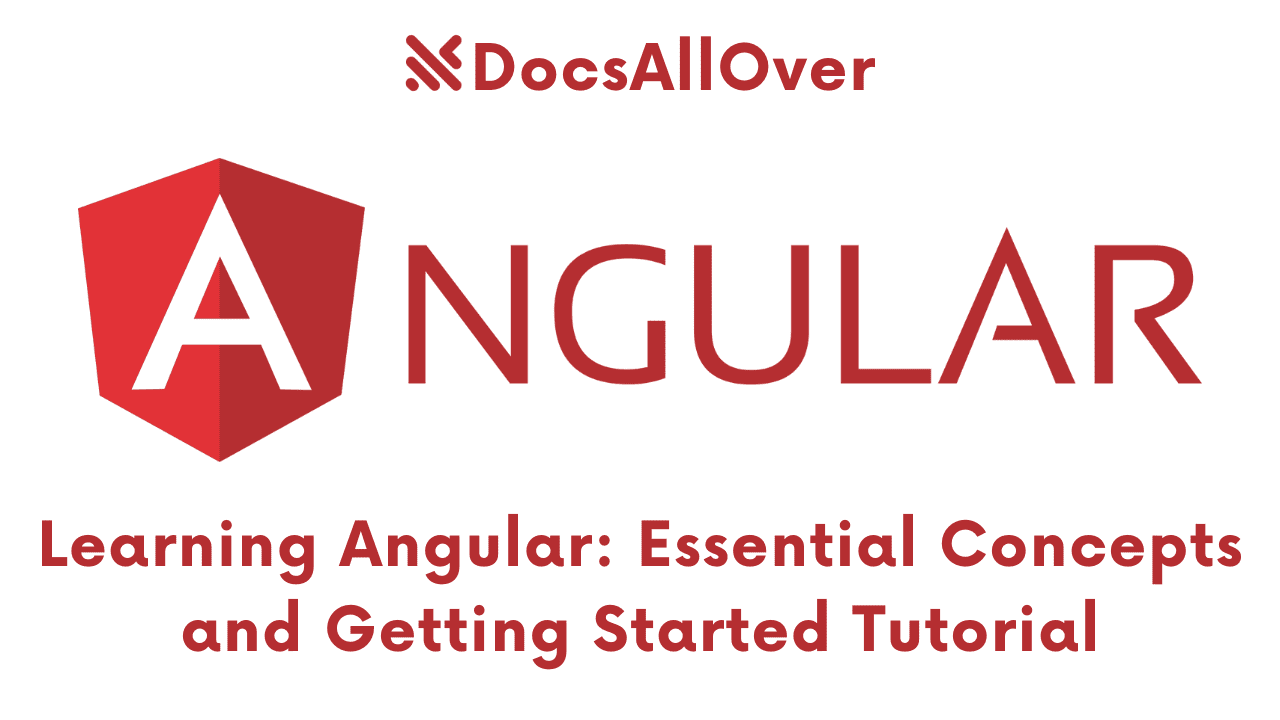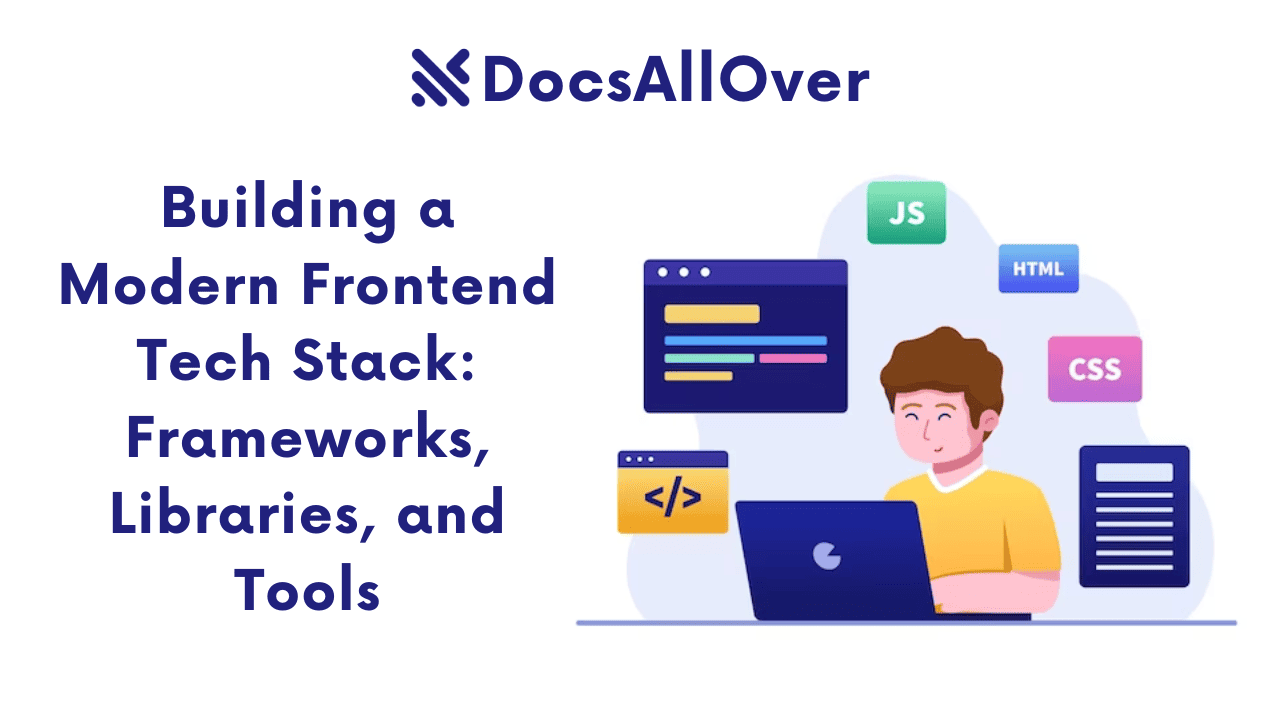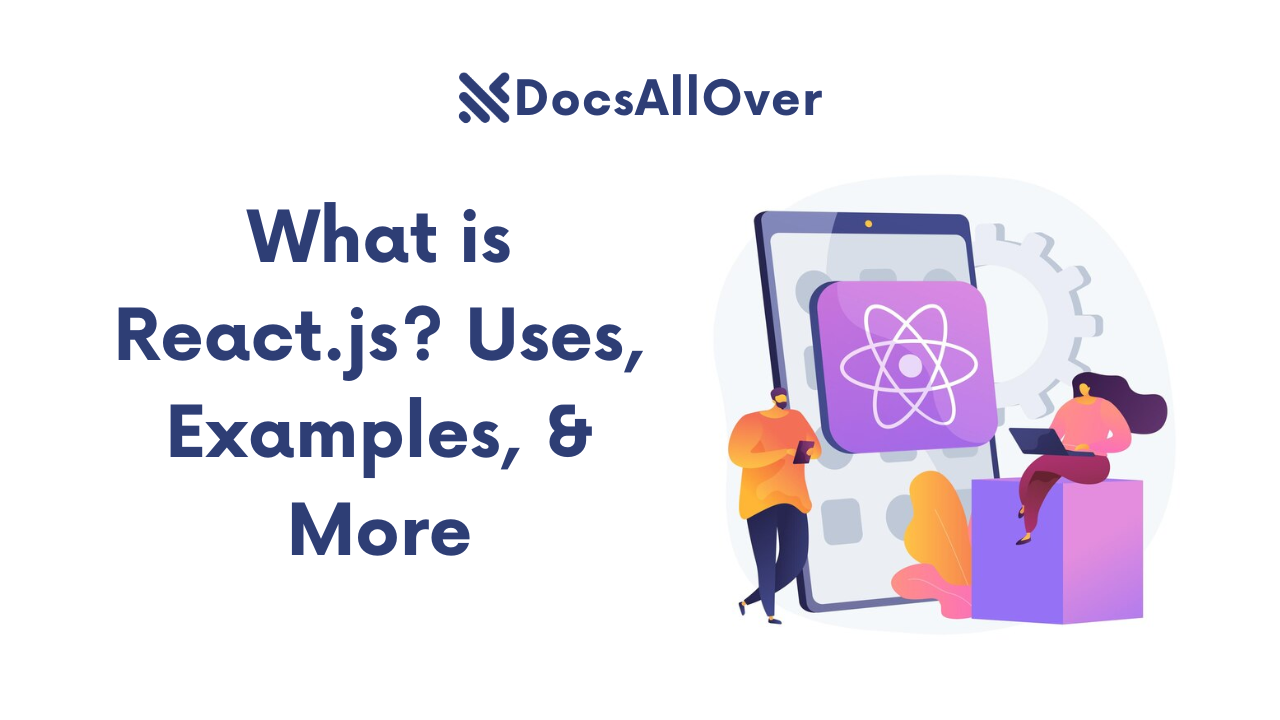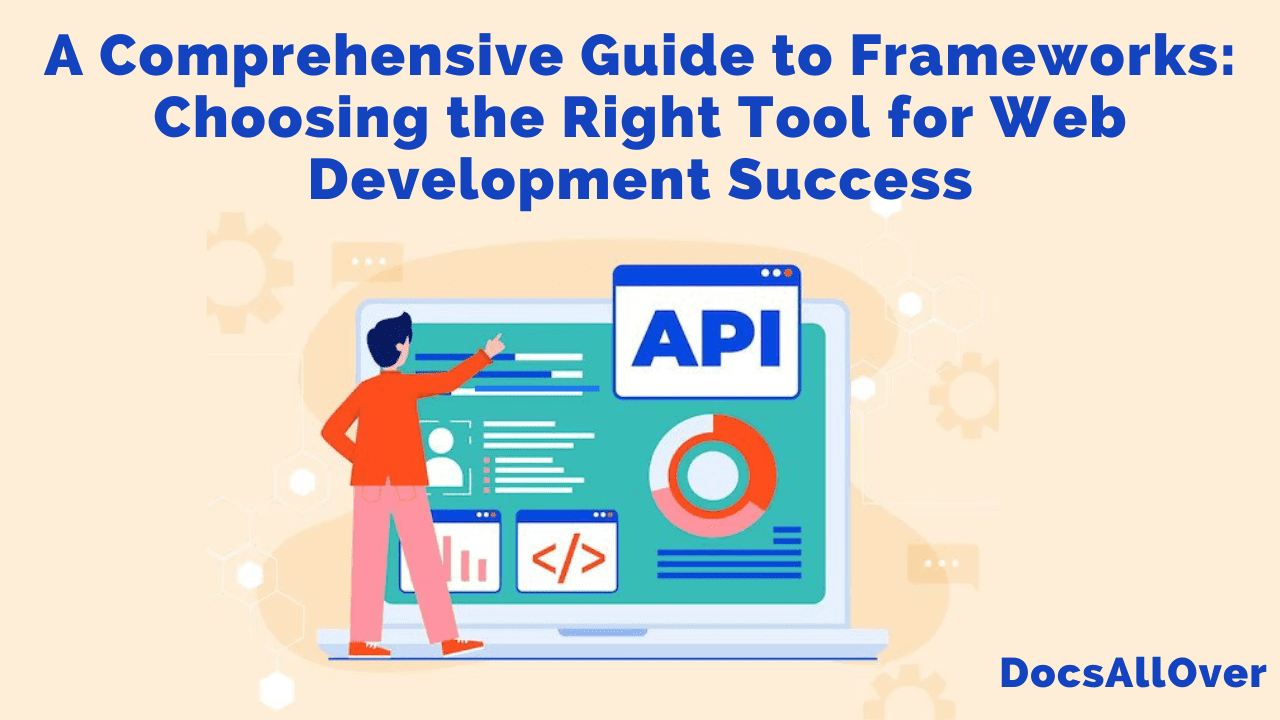Mastering Vue.js: Building Interactive and User-Friendly Web Applications
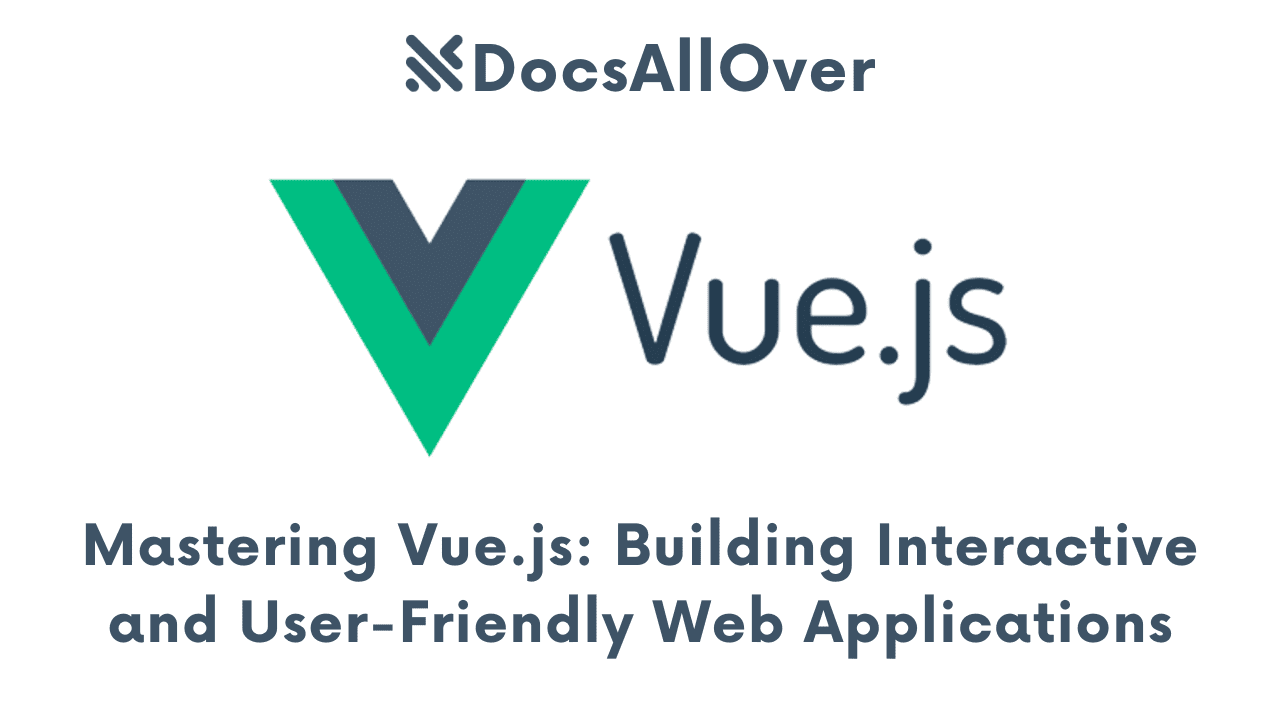
What is Vue.js?
- Vue.js is a progressive JavaScript framework used for building user interfaces.
- It's designed to be incrementally adoptable, meaning you can integrate it into existing projects or use it to build full-fledged single-page applications (SPAs).
- Vue.js focuses on the view layer of an application, making it easy to integrate with other libraries or existing projects.
- It employs a component-based architecture, allowing developers to create reusable UI elements.
Why choose Vue.js?
- Ease of Learning: Vue.js has a gentle learning curve, making it accessible to developers of all skill levels.
- Simplicity: Vue.js's syntax is clean and intuitive, reducing the complexity of front-end development.
- Flexibility: It can be used for small projects or large, complex applications.
- Performance: Vue.js is known for its high performance and small file size.
- Community and Ecosystem: Vue.js has a thriving community and a rich ecosystem of libraries and tools.
- Progressive: You can integrate Vue into parts of your project, or build the entire project with it.
Benefits of using Vue.js:
- Reactive Data Binding: Vue.js's reactive data binding automatically updates the UI when data changes.
- Component-Based Architecture: Components promote code reusability and maintainability.
- Virtual DOM: Vue.js uses a virtual DOM to optimize rendering and improve performance.
- Vue CLI: The Vue CLI simplifies project setup and development workflows.
- Vue Router: Vue Router enables the creation of single-page applications with client-side routing.
- Vuex: Vuex provides a centralized state management solution for complex applications.
- Lightweight: Vue.js has a small footprint, resulting in faster load times.
- Great Documentation: The official Vue documentation is very well written.
Overview of the blog post:
- This blog post will serve as a comprehensive guide to mastering Vue.js.
- We will cover the essential concepts, from setting up your environment to building complex applications.
- We will explore components, routing, state management, and advanced techniques.
- We will also cover best practices for building user-friendly and optimized Vue.js applications.
- The goal is to provide you with the knowledge and skills to create interactive and dynamic web applications using Vue.js.
Setting up your Vue.js Environment
Installing Node.js and npm/yarn:
- Node.js is a JavaScript runtime environment that Vue.js relies on.
- npm (Node Package Manager) and yarn are package managers used to install and manage project dependencies.
- Download and install Node.js from the official website: nodejs.org.
- The Node.js installer includes npm by default.
- To install yarn, run the following command in your terminal:
npm install -g yarn. - Verify the installations by running
node -v,npm -v, andyarn -vin your terminal.
Installing Vue CLI:
- Vue CLI (Command Line Interface) is a tool that simplifies Vue.js project setup and development.
- Install Vue CLI globally using npm or yarn:
- npm:
npm install -g @vue/cli - yarn:
yarn global add @vue/cli
- npm:
- Verify the installation by running
vue --versionin your terminal.
Creating a new Vue.js project:
- Use the Vue CLI to create a new Vue.js project.
- In your terminal, navigate to the directory where you want to create your project.
- Run the following command:
vue create <project-name>(replace<project-name>with your desired project name). - The CLI will prompt you to choose a preset.
- You can choose the default preset (Vue 3 or Vue 2, depending on your CLI version) or manually select features.
- If you are new to Vue, the default preset is recommended.
- After the project is created, navigate to the project directory:
cd <project-name>. - To start the development server, run
npm run serveoryarn serve.
Understanding the project structure:
- The Vue CLI generates a project structure with the following key directories and files:
node_modules: Contains project dependencies.public: Contains static assets, such asindex.html.src: Contains the application's source code.assets: Contains static assets, such as images and fonts.components: Contains Vue.js components.App.vue: The root component of the application.main.js: The entry point of the application.
package.json: Contains project metadata and dependencies.vue.config.js: Configuration file for Vue CLI.
- Understanding this structure is essential for organizing and developing your Vue.js application.
- The
srcfolder is where most of your development will take place.
Vue.js Fundamentals
Vue.js instance and options:
- A Vue.js application starts with creating a new Vue instance.
- The Vue instance is the root of the Vue application.
- It is created using the
new Vue()constructor. - The constructor takes an options object that defines the behavior of the Vue instance.
- Common options include:
el: Specifies the DOM element to mount the Vue instance to.data: Defines the data properties of the Vue instance.methods: Defines the methods of the Vue instance.computed: Defines computed properties.watch: Defines watchers.components: Registers components.
- Example:
Data binding and directives (v-model, v-bind, v-if, v-for):
- Data Binding: Vue.js provides reactive data binding, automatically updating the UI when data changes.
- Directives: Special HTML attributes that provide instructions to Vue.js.
v-model: Creates a two-way data binding between form input elements and data properties.v-bind: Binds an HTML attribute to a data property. Shorthand is:.v-if: Conditionally renders an element based on a data property.v-for: Renders a list of items based on an array or object.
- Examples:
Computed properties and watchers:
- Computed Properties:
- Computed properties are functions that calculate a value based on other data properties.
- They are cached and only re-evaluated when their dependencies change.
- They are defined in the
computedoption.
- Watchers:
- Watchers are functions that are called when a data property changes.
- They are useful for performing asynchronous or expensive operations in response to data changes.
- They are defined in the
watchoption.
- Examples:
Methods and event handling:
- Methods:
- Methods are functions that can be called from within the Vue instance.
- They are defined in the
methodsoption.
- Event Handling:
- Vue.js provides the
v-ondirective to listen for DOM events. Shorthand is@. - You can call methods or execute inline expressions in response to events.
- Vue.js provides the
- Examples:
Components in Vue.js
What are components?
- Components are reusable Vue instances with a name.
- They encapsulate a piece of the user interface and its associated logic.
- Components allow you to break down a complex application into smaller, manageable parts.
- They promote code reusability and maintainability.
- They allow for effective organization of code.
Creating and registering components:
- Components can be created using the
Vue.component()method or within a Single File Component (SFC). - Global components are registered using
Vue.component()and are available throughout the application. - Local components are registered within a parent component's
componentsoption and are only available within that parent. - Example (global component):
- Example (local component):
Props and emitting events:
- Props:
- Props are custom attributes that allow you to pass data from a parent component to a child component.
- They are defined in the child component's
propsoption. - Props are read-only within the child component.
- Emitting Events:
- Child components can emit custom events to communicate with parent components.
- The
$emit()method is used to emit events. - Parent components can listen for these events using
v-onor@.
- Example:
Component lifecycle hooks:
- Lifecycle hooks are functions that are called at different stages of a component's lifecycle.
- Common lifecycle hooks include:
beforeCreate: Called before the component is created.created: Called after the component is created.beforeMount: Called before the component is mounted to the DOM.mounted: Called after the component is mounted to the DOM.beforeUpdate: Called before the component is updated.updated: Called after the component is updated.beforeDestroy: Called before the component is destroyed.destroyed: Called after the component is destroyed.
- These hooks allow you to perform actions at specific points in a components life.
Single File Components (SFCs):
- SFCs are files with a
.vueextension that encapsulate a component's template, script, and style. - They provide a clean and organized way to manage components.
- SFCs require a build tool (e.g., Vue CLI) to compile them into browser-compatible JavaScript.
- Example of a basic SFC:
- Scoped styles, are only applied to the component.
Routing with Vue Router
What is Vue Router?
- Vue Router is the official router for Vue.js.
- It allows you to build single-page applications (SPAs) with client-side routing.
- It enables navigation between different views or components without requiring a full page reload.
- It provides features like route parameters, nested routes, and programmatic navigation.
Setting up Vue Router:
- Install Vue Router using npm or yarn:
- npm:
npm install vue-router - yarn:
yarn add vue-router
- npm:
- Import Vue Router into your
main.jsfile. - Use
Vue.use(VueRouter)to register the router plugin. - Create a router instance using
new VueRouter()and define your routes. - Mount the router instance to your Vue application.
- Example
main.js:
Defining routes and navigation:
- Routes are defined as an array of objects, each with a
pathand acomponentproperty. - The
pathproperty defines the URL path, and thecomponentproperty specifies the component to render. - Use the
<router-link>component to create navigation links. - Use the
<router-view>component to render the matched component. - Example:
Dynamic route matching:
- Dynamic route matching allows you to define routes with parameters.
- Route parameters are accessed using
$route.params. - Example:
Nested routes:
- Nested routes allow you to define routes within other routes.
- They are useful for creating complex layouts with multiple levels of navigation.
- Use the
childrenproperty to define nested routes. - Example:
- The inner router view will render the child components.
State Management with Vuex
What is Vuex?
- Vuex is a state management pattern + library for Vue.js applications.
- It serves as a centralized store for all the components in an application, with rules ensuring that the state can only be mutated in a predictable fashion.
- It helps manage shared state in complex applications, making it easier to maintain and debug.
- It provides a single source of truth for your application's data.
Setting up Vuex store:
- Install Vuex using npm or yarn:
- npm:
npm install vuex - yarn:
yarn add vuex
- npm:
- Import Vuex into your
main.jsfile. - Use
Vue.use(Vuex)to register the Vuex plugin. - Create a new Vuex store instance using
new Vuex.Store(). - Mount the store instance to your Vue application.
- Example
main.js:
State, mutations, actions, and getters:
- State:
- The state object holds the application's data.
- It's the single source of truth for the application.
- Mutations:
- Mutations are functions that modify the state.
- They are synchronous and must be used to change the state.
- They take the state as their first argument and a payload as their second argument.
- Actions:
- Actions are functions that commit mutations.
- They can be asynchronous and perform complex operations.
- They take the context object (which exposes commit, dispatch, and state) as their first argument and a payload as their second argument.
- Getters:
- Getters are functions that compute derived state based on the state.
- They are cached and only re-evaluated when their dependencies change.
- Example:
Using Vuex in components:
- Use the
mapState,mapMutations,mapActions, andmapGettershelper functions to access state, mutations, actions, and getters in components. - Use
$store.state,$store.commit(),$store.dispatch(), and$store.gettersto access Vuex directly. - Example:
Modules:
- Modules allow you to divide the store into smaller, manageable parts.
- They are useful for organizing state in large applications.
- Modules can have their own state, mutations, actions, and getters.
- They can be nested to create a hierarchical structure.
- Example:
Advanced Vue.js Concepts
Custom directives:
- Custom directives allow you to add custom behavior to DOM elements.
- They provide a way to manipulate the DOM directly.
- They can be used for tasks like input formatting, focus management, or adding custom event listeners.
- Directives are defined using
Vue.directive(). - They have lifecycle hooks like
bind,inserted,update, andunbind. - Example:
Mixins:
- Mixins are a flexible way to distribute reusable functionality for Vue components.
- They allow you to extract common logic and share it among multiple components.
- Mixins can contain any component options, such as data, methods, computed properties, and lifecycle hooks.
- They are merged with the component's options when the component is created.
- Example:
Transitions and animations:
- Vue.js provides built-in transition and animation capabilities.
- The
<transition>component allows you to apply transitions to elements when they are inserted, updated, or removed from the DOM. - CSS transitions and animations can be used with the
<transition>component. - Vue.js also provides the
<transition-group>component for animating lists. - Vue provides animation hooks that can be used to directly manipulate animations using javascript.
Async components:
- Async components allow you to load components lazily, on demand.
- They can improve the initial load time of your application by deferring the loading of non-critical components.
- Async components are defined using a factory function that returns a Promise.
- Example:
Server-Side Rendering (SSR) with Nuxt.js (brief overview):
- Server-Side Rendering (SSR) allows you to render Vue.js applications on the server and send the rendered HTML to the client.
- SSR improves SEO, initial load time, and accessibility.
- Nuxt.js is a framework built on top of Vue.js that simplifies SSR.
- Nuxt.js provides features like automatic code splitting, server-side data fetching, and static site generation.
- Nuxt.js handles the complexity of setting up SSR, allowing you to focus on building your application.
- Nuxt also allows for the easy creation of API endpoints.
Best Practices and Optimization
Code organization and structure:
- Component-Based Architecture: Leverage Vue.js's component-based architecture to break down your application into reusable and manageable pieces.
- Single File Components (SFCs): Use SFCs to encapsulate a component's template, script, and style.
- Directory Structure: Establish a consistent directory structure for your components, assets, and other resources.
- Naming Conventions: Follow consistent naming conventions for files, components, and variables.
- Modularization: Break down large components into smaller, more focused components.
- State Management: Use Vuex for managing shared state in complex applications.
- Routing: Utilize Vue Router for client-side routing and navigation.
- Lazy Loading: Implement lazy loading for components and routes to improve initial load time.
- Use Composition API: If using Vue 3, strongly consider using the composition API.
Performance optimization techniques:
- Virtual DOM: Understand how Vue.js's virtual DOM works and avoid unnecessary re-renders.
- Key Attribute: Use the
keyattribute when rendering lists withv-forto improve rendering performance. - Computed Properties and Watchers: Use computed properties and watchers efficiently to avoid unnecessary calculations.
- Async Components and Lazy Loading: Load components and routes lazily to reduce initial load time.
- Code Splitting: Use code splitting to break down your application into smaller chunks.
- Minimize DOM Manipulations: Minimize direct DOM manipulations and rely on Vue.js's data binding.
- Optimize Images and Assets: Optimize images and other assets to reduce file sizes.
- Use Production Build: Build your application in production mode to enable optimizations.
- Caching: Use caching strategies where appropriate.
- Avoid Memory Leaks: Properly destroy components and remove event listeners to prevent memory leaks.
- Profile your code: Use the browser's developer tools to profile your code and identify performance bottlenecks.
Testing Vue.js applications:
- Unit Tests: Write unit tests for individual components and functions using testing frameworks like Jest or Mocha.
- Component Tests: Use Vue Test Utils to test Vue.js components in isolation.
- End-to-End (E2E) Tests: Write E2E tests to test the entire application using tools like Cypress or Playwright.
- Test Coverage: Aim for high test coverage to ensure that your code is thoroughly tested.
- Continuous Integration (CI): Integrate testing into your CI pipeline to automate testing.
- Mocking: Use mocking to isolate components and dependencies during testing.
- Snapshot Testing: Use snapshot testing to detect unintended changes in UI components.
- Accessibility Testing: Test for accessibility issues to ensure your application is usable by everyone.
Debugging Vue.js applications:
- Vue Devtools: Use the Vue Devtools browser extension to inspect Vue.js components, data, and events.
- Browser Developer Tools: Use the browser's developer tools to debug JavaScript code and inspect the DOM.
- Console Logging: Use
console.log()statements to log data and track the execution flow. - Breakpoints: Set breakpoints in your code to pause execution and inspect variables.
- Error Handling: Implement proper error handling to catch and log errors.
- Source Maps: Use source maps to debug your code in its original form.
- Vuex Debugging: Use the Vuex Devtools to inspect Vuex state, mutations, and actions.
- Debugging Tools: Use debugging tools like
VS Code debuggerorWebStorm debugger. - Isolate the issue: When encountering bugs, try to isolate the issue to a minimal reproducible example.
Building User-Friendly Applications
Accessibility considerations:
- Semantic HTML: Use semantic HTML elements to provide structure and meaning to your content.
- ARIA Attributes: Use ARIA attributes to enhance accessibility for screen readers and assistive technologies.
- Keyboard Navigation: Ensure that your application is fully navigable using the keyboard.
- Focus Management: Implement proper focus management to guide keyboard users through interactive elements.
- Color Contrast: Ensure sufficient color contrast between text and background colors.
- Alternative Text: Provide descriptive alternative text for images and multimedia content.
- Form Labels: Use clear and descriptive labels for form inputs.
- Screen Reader Compatibility: Test your application with screen readers to ensure compatibility.
- Avoid Flash: Avoid using Flash, and other technologies that have accessibility issues.
- Scalable Content: Ensure that text and content can be scaled without breaking the layout.
Responsive design principles:
- Mobile-First Approach: Design your application for mobile devices first and then progressively enhance it for larger screens.
- Flexible Layouts: Use flexible layouts and grids that adapt to different screen sizes.
- Media Queries: Use media queries to apply different styles based on screen size and device characteristics.
- Viewport Meta Tag: Set the viewport meta tag to control the viewport's dimensions and scaling.
- Responsive Images: Use responsive images that adapt to different screen resolutions.
- Touch Interactions: Optimize your application for touch interactions on mobile devices.
- Testing on Real Devices: Test your application on a variety of real devices to ensure responsiveness.
- Breakpoints: Define clear breakpoints to manage layout changes at different screen sizes.
- Fluid Typography: Use relative units for font sizes and line heights to ensure that text scales appropriately.
UI/UX best practices for Vue.js apps:
- Consistent Design: Maintain a consistent design language throughout your application.
- Intuitive Navigation: Design intuitive navigation patterns that are easy to understand.
- Clear Feedback: Provide clear feedback to users for their actions.
- User-Centered Design: Focus on the user's needs and goals when designing your application.
- Performance Optimization: Optimize your application for performance to provide a smooth user experience.
- Minimalism: Keep the UI clean and uncluttered.
- Progressive Disclosure: Reveal complex information or options gradually.
- Accessibility: Design with accessibility in mind.
- Usability Testing: Conduct usability testing to gather feedback and identify areas for improvement.
- Error Handling: Implement robust error handling and provide helpful error messages.
- Loading States: Provide visual feedback during loading states.
- Microinteractions: Use microinteractions to enhance user engagement.
